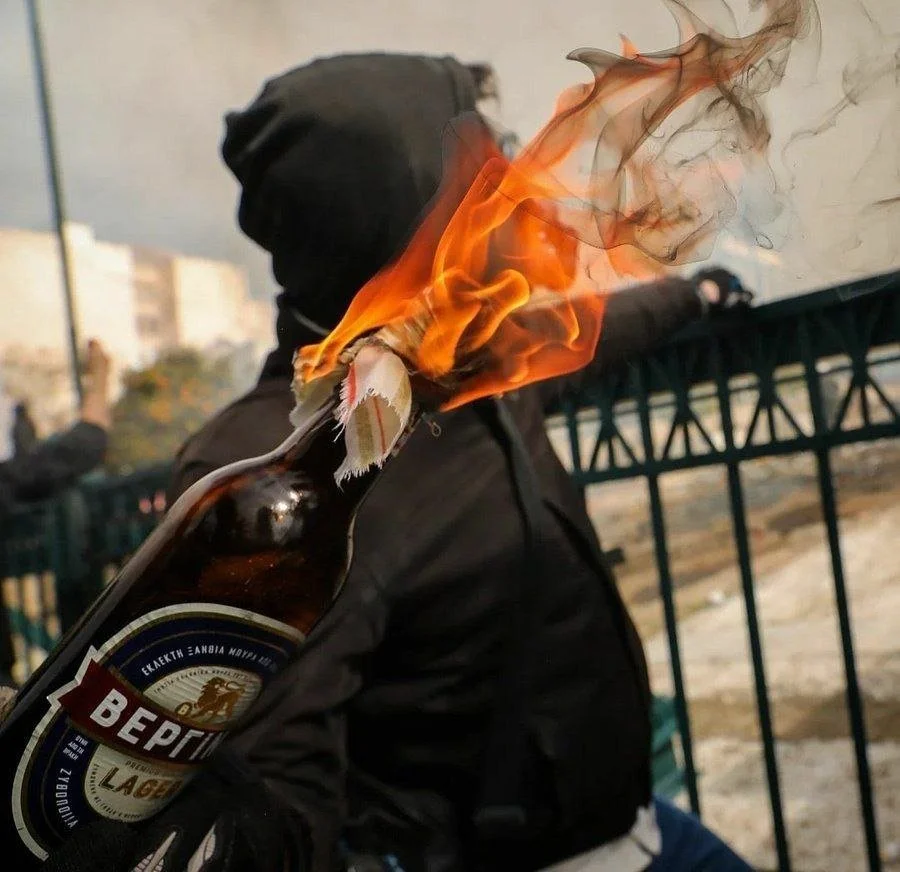Molotovs and Mayhem: Anarchists Stoke Flames Amid Violent Greek Protests
Executive Summary
As Greece faces its largest protests in years over the 2023 Tempe train disaster, violent clashes erupted in Athens, with masked demonstrators hurling Molotov cocktails and fireworks at riot police outside parliament. In a likely related incident, an anarchist Telegram channel posted an image of a Molotov-wielding individual, celebrating attacks on government institutions. The protests, fueled by public outrage over government accountability, have led to violent street battles, dozens of arrests, and growing fears of escalating unrest.
Analysis
The protests in Greece have transformed from a movement seeking justice for the 57 victims of the Tempe train disaster into a broader anti-government uprising. Initially peaceful, mass demonstrations have increasingly been hijacked by violent anarchist factions who view the moment as an opportunity to push their anti-state agenda.
On the night of March 5, Syntagma Square outside the Greek parliament became a battlefield. Hooded rioters launched gasoline bombs, fireworks, and stones at police forces, who responded with tear gas, baton charges, and water cannons. The violence comes as opposition parties challenge Prime Minister Kyriakos Mitsotakis’ government with a no-confidence motion, accusing it of shielding high-ranking officials from accountability. The government has dismissed the motion as political opportunism, but public anger remains high.
Adding to concerns is the role of anarchist groups in escalating the unrest. A Telegram channel linked to far-left extremists posted an image of a masked individual holding a Molotov cocktail, captioned with incendiary rhetoric:
“A cheeky member of the polis brings the gift of fire to an ungrateful parliament in Athens. Nothing ever burns down by itself, every fire needs a little bit of help.”
This statement aligns with the violent tactics seen during recent protests. Anarchist and anti-authoritarian groups have a long history of engaging in street battles with police in Greece, particularly in Athens’ Exarchia district. They often exploit larger protests to incite chaos, targeting symbols of state power such as police stations, banks, and government buildings.
The scale of the recent protests has been immense. Hundreds of thousands of Greeks have taken to the streets in over 300 cities and towns, including Thessaloniki, Larissa, and Ioannina. Victims’ families, labor unions, and student groups have joined the movement, accusing the government of negligence and corruption. A recent inquiry found that the deadly train crash was caused by a combination of human error, outdated infrastructure, and possible cover-ups involving missing evidence at the crash site.
The Greek government now faces a critical test. While it seeks to maintain order and dismiss accusations of a cover-up, the persistence of violent clashes suggests that the crisis is far from over. If anarchist groups continue to escalate their actions, Greece could see a return to the levels of civil unrest that rocked the country during the economic crisis of the early 2010s.


